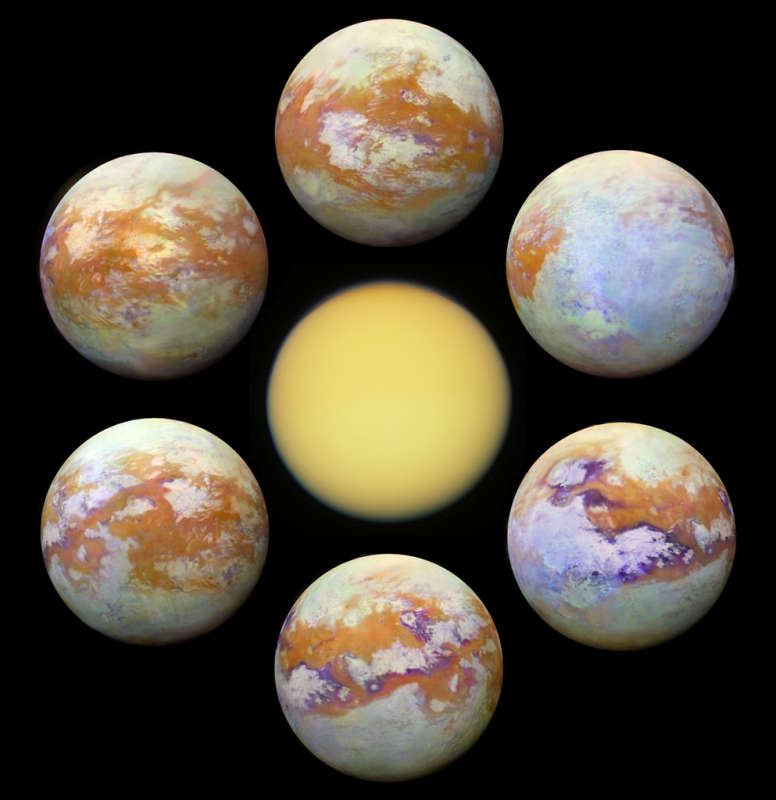Seeing Titan

Explanation:
Shrouded in a thick atmosphere,
Saturn's largest moon Titan
really is hard to see.
Small particles suspended in the upper atmosphere cause an almost
impenetrable haze, strongly scattering light at visible wavelengths
and hiding Titan's surface features from prying eyes.
But Titan's
surface is better imaged at
infrared wavelengths where
scattering is weaker and atmospheric absorption is reduced.
Arrayed around this visible light image (center) of Titan are
some of the clearest global infrared views of the
tantalizing moon so far.
In false color,
the six
panels present a consistent processing of 13 years of
infrared image data from the
Visual and Infrared Mapping Spectrometer (VIMS) on board
the
Cassini spacecraft orbiting Saturn from 2004 to 2017.
They offer a stunning comparison with Cassini's visible light view.
NASA's revolutionary rotorcraft
mission to Titan is due to launch in 2027.
Authors & editors:
Robert Nemiroff
(MTU) &
Jerry Bonnell
(USRA)
NASA Web Site Statements, Warnings,
and Disclaimers
NASA Official: Jay Norris.
Specific
rights apply.
A service of:
LHEA at
NASA /
GSFC
& Michigan Tech. U.

